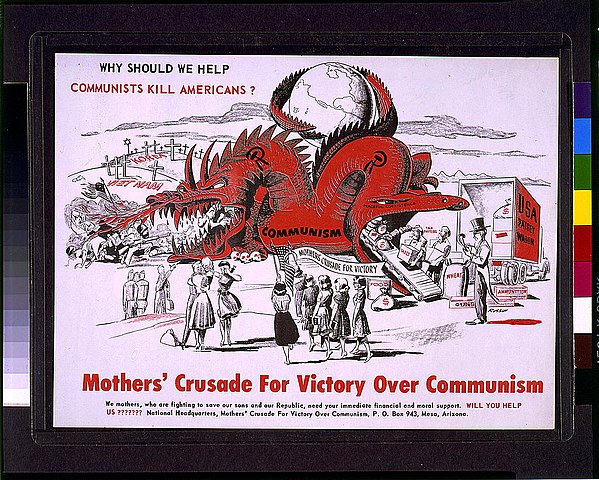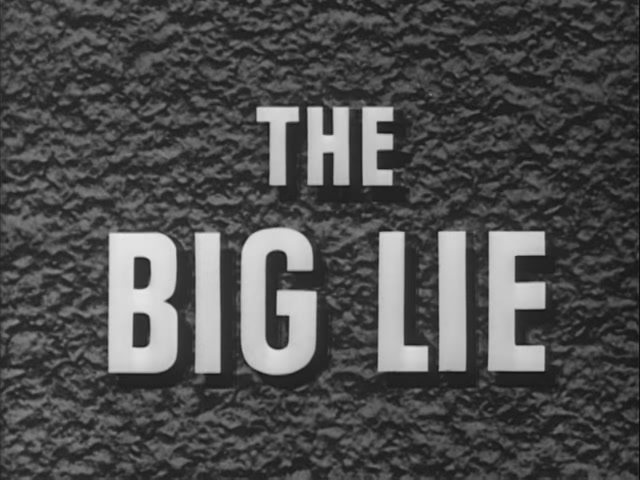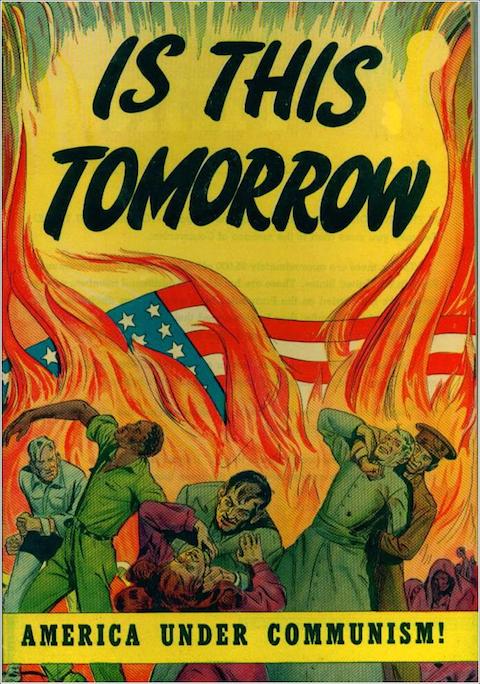Cold War | Modern Art
Propaganda Art
A collectin of propaganda posters and other artpieces.

A piece of Russian propaganda art. Communist propaganda tended to exaggerate (female) strength, prosperity and an abundance of food.

An anti-communist artwork made by the Americans.

The artstyle of this poster is quite typical for Chinese Cold War propaganda.
Both men are holding Mao's Red Book up high.

South Korean anti-communist propaganda
A piece depicting a snake (Russia) strangling the life out of a Korean native.
It suggests that any Russian involvement in Korea should be avoided at all costs.
Korea was one of the hot areas of the Cold War, and turned into a 'proxy war' like Vietnam did.

The Big Lie, a film from 1951, is a typical example of American anti-communist artwork - and how such art extended beyond the realm of portraits and posters.

Another example that anti-communism was apparent through many forms of art (a comic book in this case).

Art had a special meaning during the Cold War; it was not merely effective at catching the eye of the onlooker, but it was also a form of softpower and competition. The USA and USSR were in an ideological rivalry: each party wanted to excell over the other in every asset imaginable. In space achievements (above), in art (the images before) and even in interior design (next image).

As said, the Soviet Union and USA were competing to be the best in any realm imaginable. The Kitchen debate (above) showed both countries were even competing for who made the best and most modern kitchens. (end of gallery)